Beyond Seeing the Suseok (Natural Stones)
A description of a solo exhibition of Suseok in Seoul, Korea
By Thomas S. Elias
Three countries—China, Korea, and Japan—have been responsible for developing the ancient Asian art of viewing stone appreciation. Stone enthusiasts in other countries are more familiar with the modern Japanese practices of stone exhibitions, followed by Chinese methods, and least known are the Korean traditions (customs). This article will examine a June 2024 exhibition of Korean Suseok in Seoul, South Korea, highlighting some features that help identify the exhibition as distinctively Korean.
The 1st Solo Suseok (Viewing Stones, Suiseki) Exhibition of Dr. Shim SooBo was held at the Baegak Art Space in Insa-dong, Seoul, South Korea. The Insa-dong region was once the largest market for antiques and art in Korea. Dr. Shim was the President of the Korean Suseok Association from February 2023 to February 2024. He was a professor of Animal Sciences at Jeonbuk National University before he retired earlier this year. Shim has been collecting and displaying Suseok for many years and has assembled a large collection of excellent stones. While he has participated in many exhibitions in past years, this was his first display of only his stones. The theme of this exhibition was “Beyond Seeing the Suseok (Natural Stones): Appreciation of Suseok through Artistic and Humanistic Insights.”
Korean Suseok exhibitions are typically more formal, structured events than in most other countries. In this exhibition, the Shim family welcomes attendees at the opening of the exhibition followed by a violin music performance, a brief speech by a former Vice Minister of Culture, Sports, and Tourism in Korea, and welcoming comments from Dr. Shim SooBo.
Several congratulatory original works of art, photographs, paintings, calligraphy, and a wood carving were displayed to celebrate this exhibition. The theme in their works followed the tradition of the literati of the Joseon dynasty (1392-1897) and featured the four noble flowers (plum, orchid, chrysanthemum, and bamboo). Sometimes this suite was expanded to include the Korean pine and Suseok.
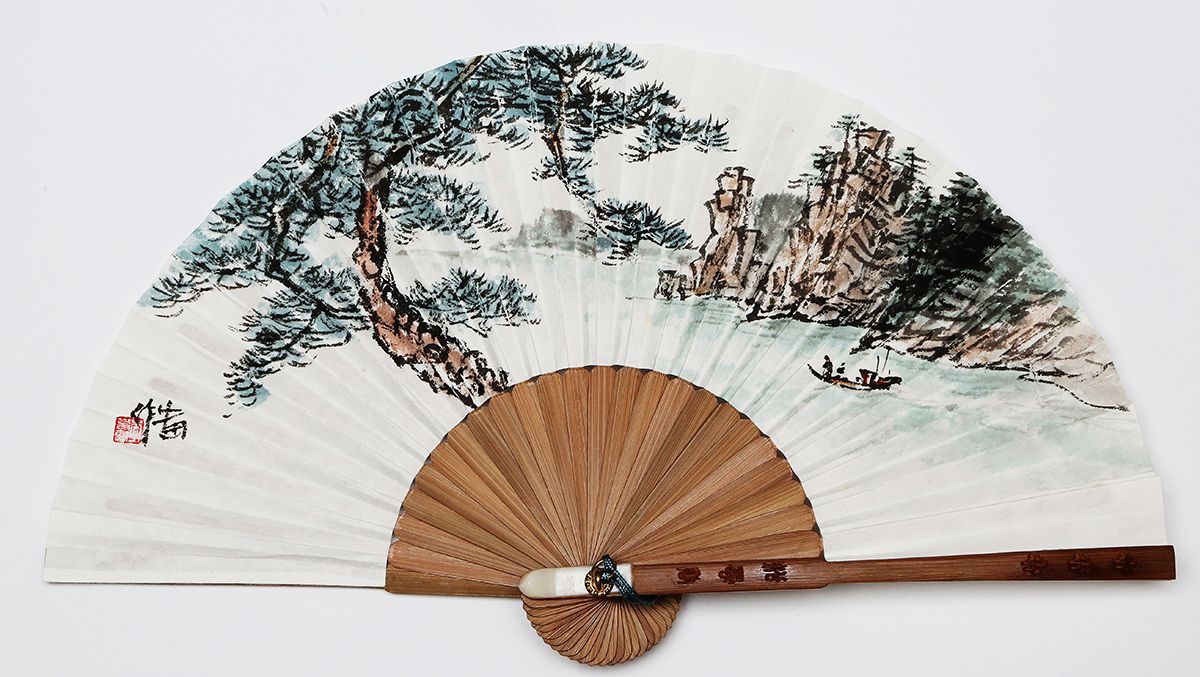
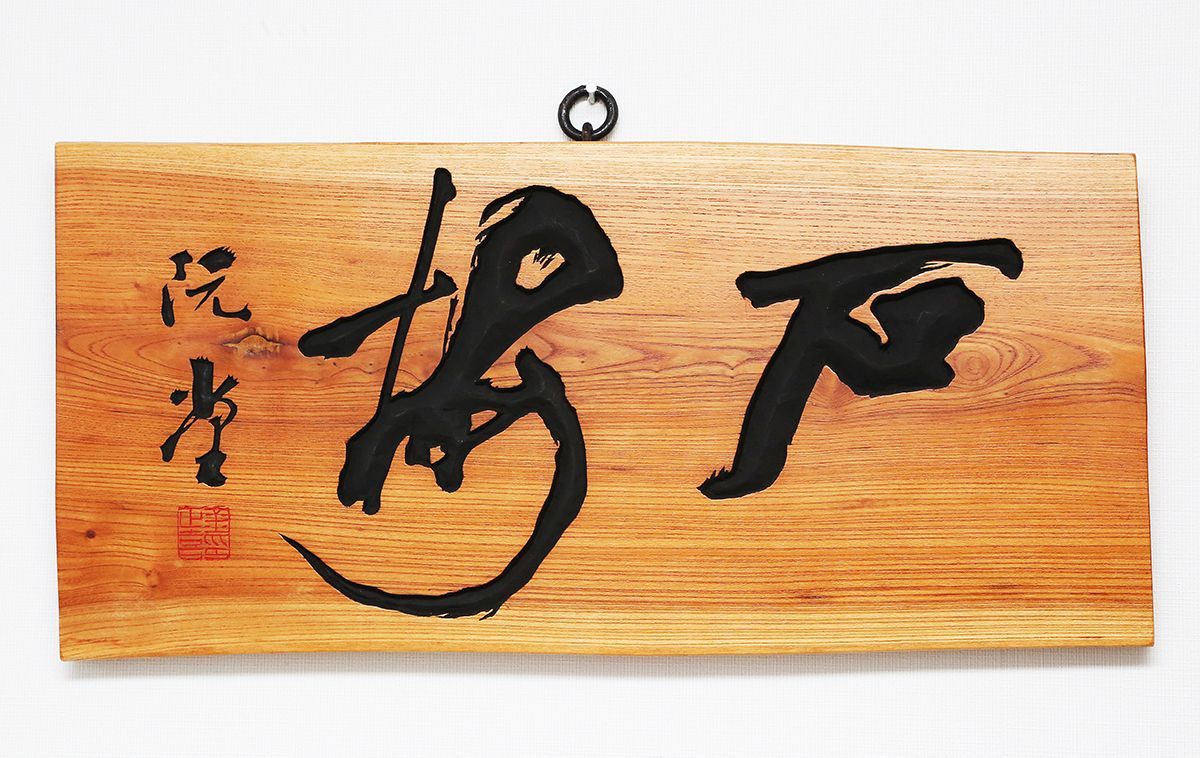
The exhibition consisted of 65 stones from Shim’s collection and nine semi-precious and precious minerals from his wife’s collection. All the Suseok on display were natural stones that had not been modified. It is good to see Korean aesthetics expressed in this exhibition rather than being replaced with the more wide spread Japanese methods of display. South Korean art is emerging and has been gaining recognition worldwide in recent years. Korean Suseok practices should be recognized and appreciated for their beauty and distinct style and not treated as subordinate to Chinese and Japanese methods of stone exhibitions.
Following are selected examples of Suseok displayed in Shim Soobo’s exhibition. We follow the Korean method of giving measurements in the order of width x height x depth. The measurements are for the stone and not the entire display.
Many of the stones were displayed in Korean-made ceramic (Dojagi suban (도자기 수반 / 陶瓷器 水盤) or metal (mostly copper) trays (Dongsuban (동 수반 / 銅 水盤), the Korean words for these trays. Sand is similarly used in the trays as in Japanese displays. Korean collectors frequently mist their stones with water when displayed in ceramic or metal trays.


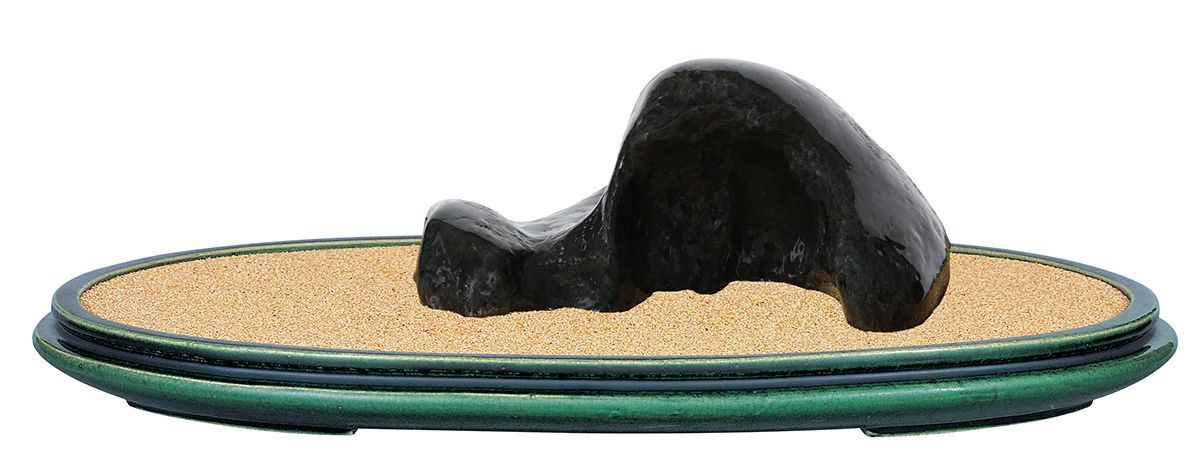


The remaining stones were displayed in hand-carved, lip and socket style wood bases, mostly in a distinctive style and color preferred dark brown, dark yellow, and black color depending on the shape and surface quality of each stone. Some features that help to identify Korean-made bases are: the lip surrounding the lowest portion of the base is usually more prominent, legs are sometimes short and bulbous; and lighter color woods featuring the grain are seen in many bases. Understated Japanese-style bases can be seen in many Suseok exhibitions.
There appears to be a greater preference among Korean stone connoisseurs for pattern stones and a wider range of lighter and black-colored stones than seen in Japanese practices. Rounded, semi-rounded, or oblong-shaped stones collected along Korea’s vast coastlines and riversides are a larger component of Suseok exhibitions than in Japanese displays.
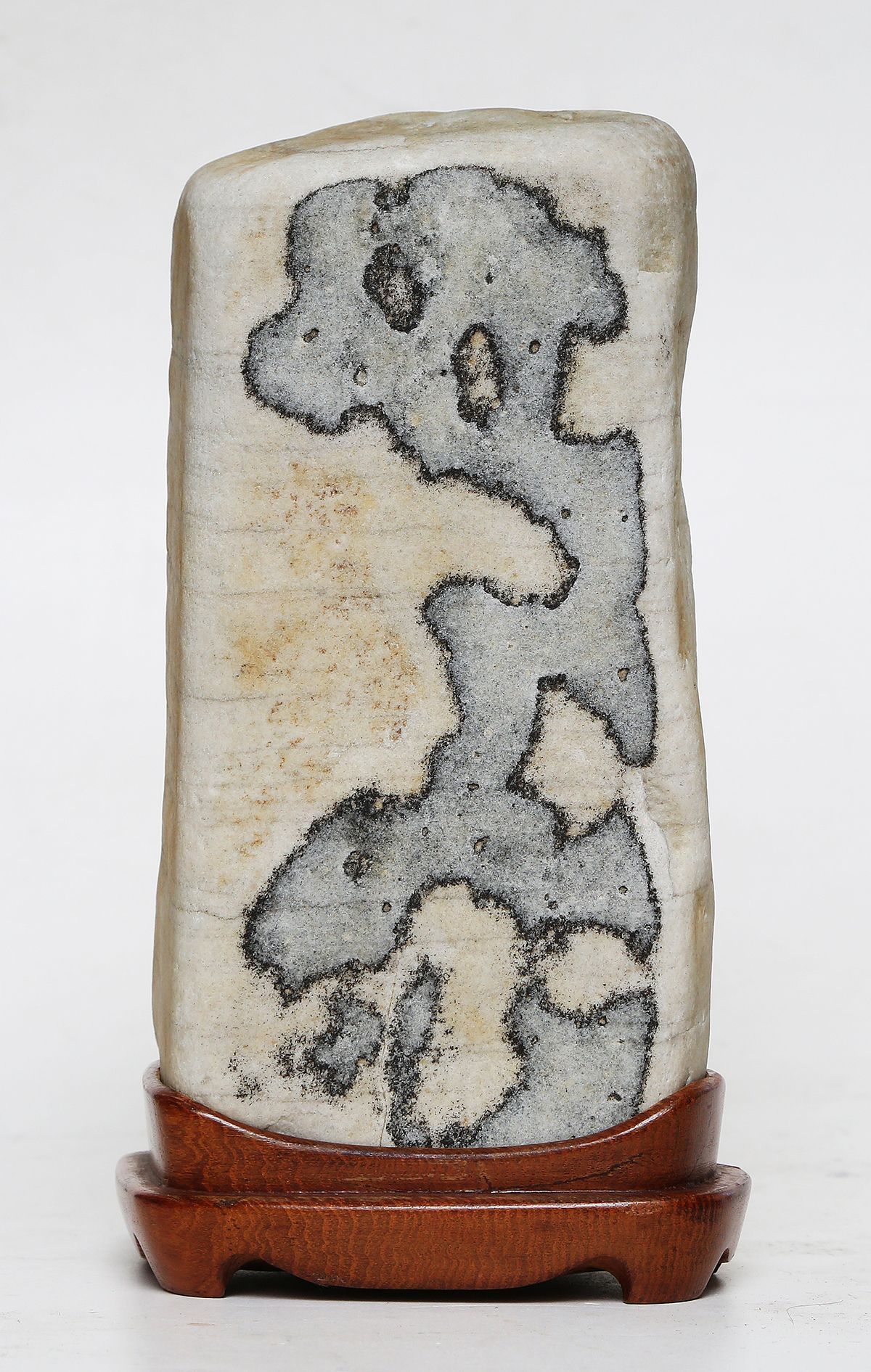
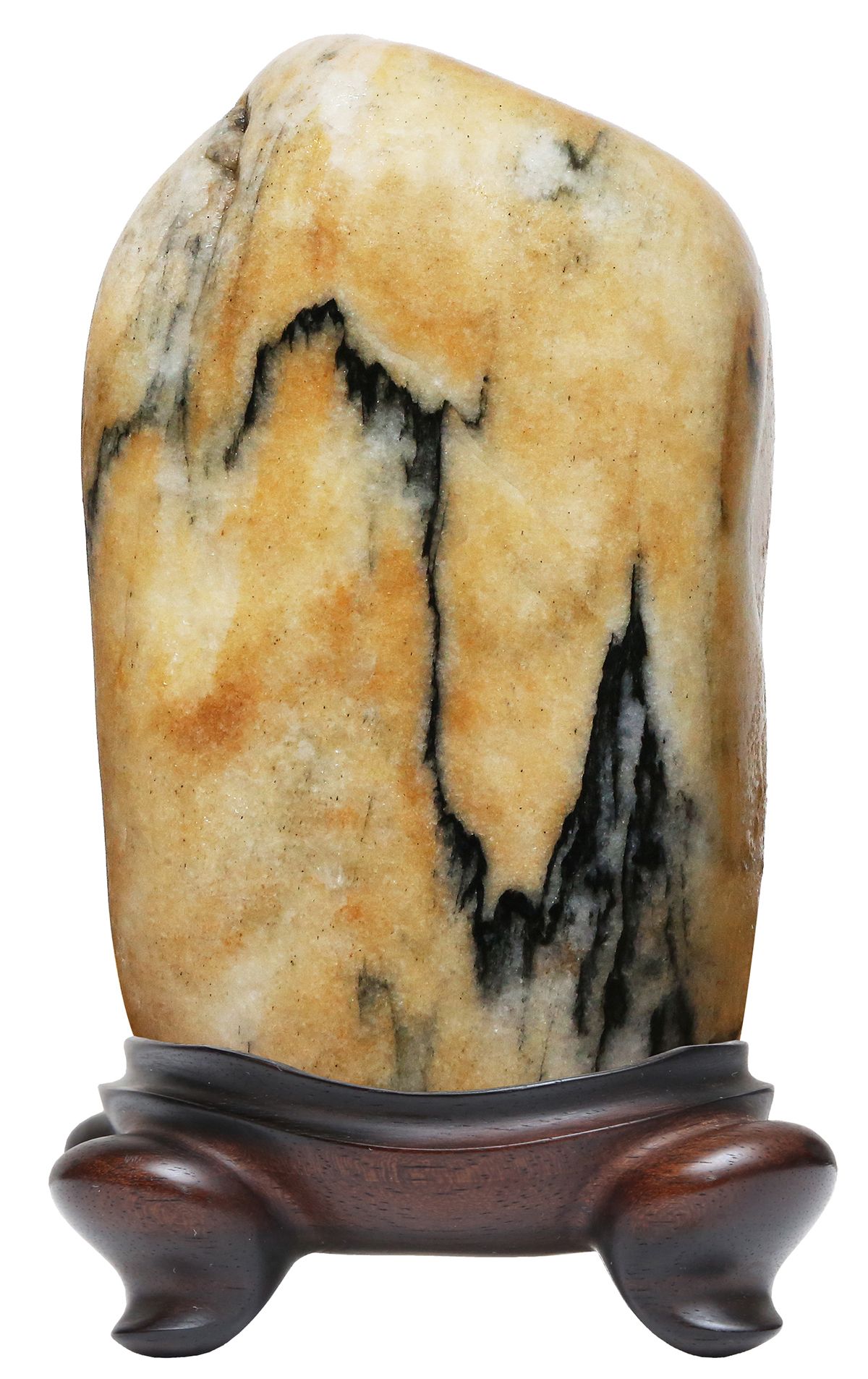
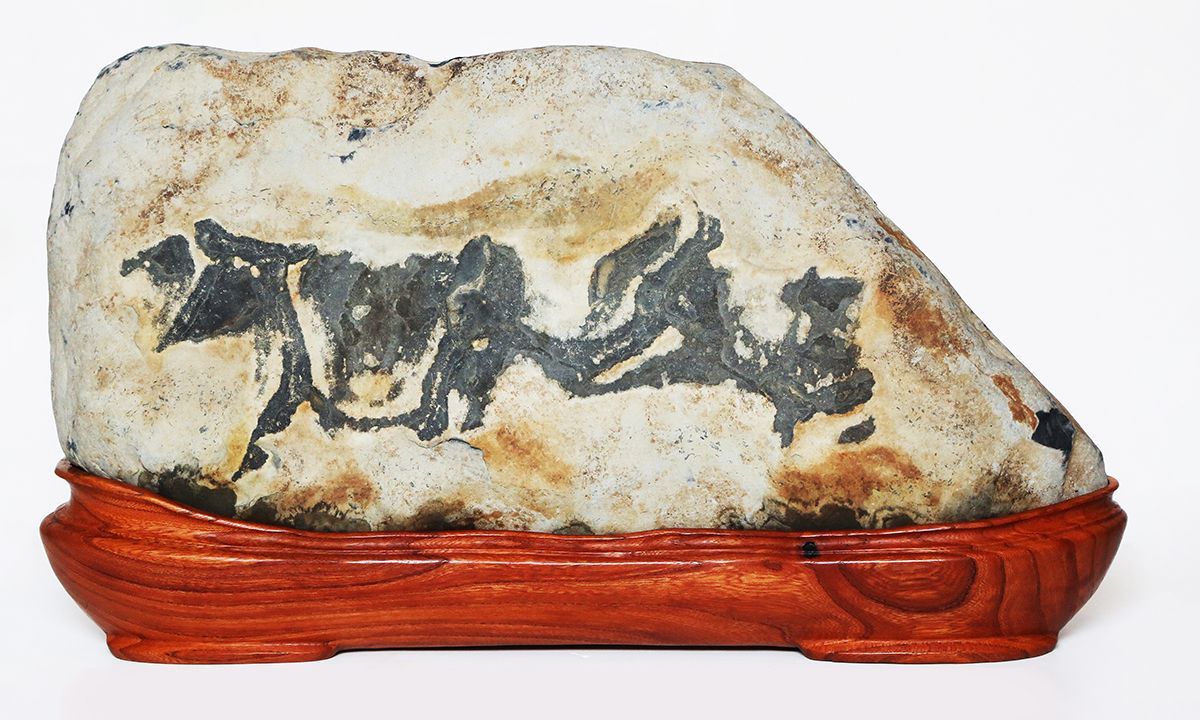
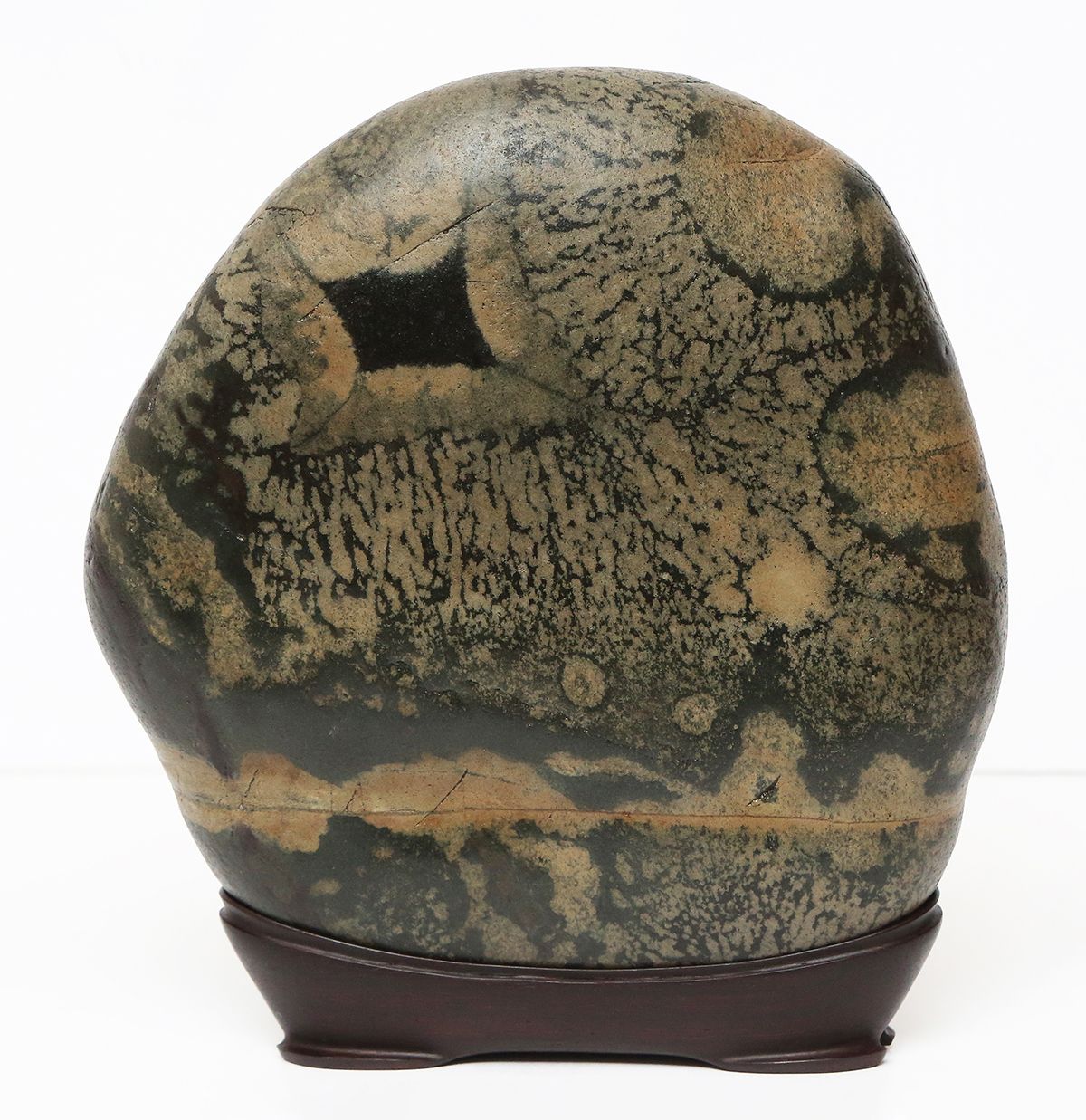

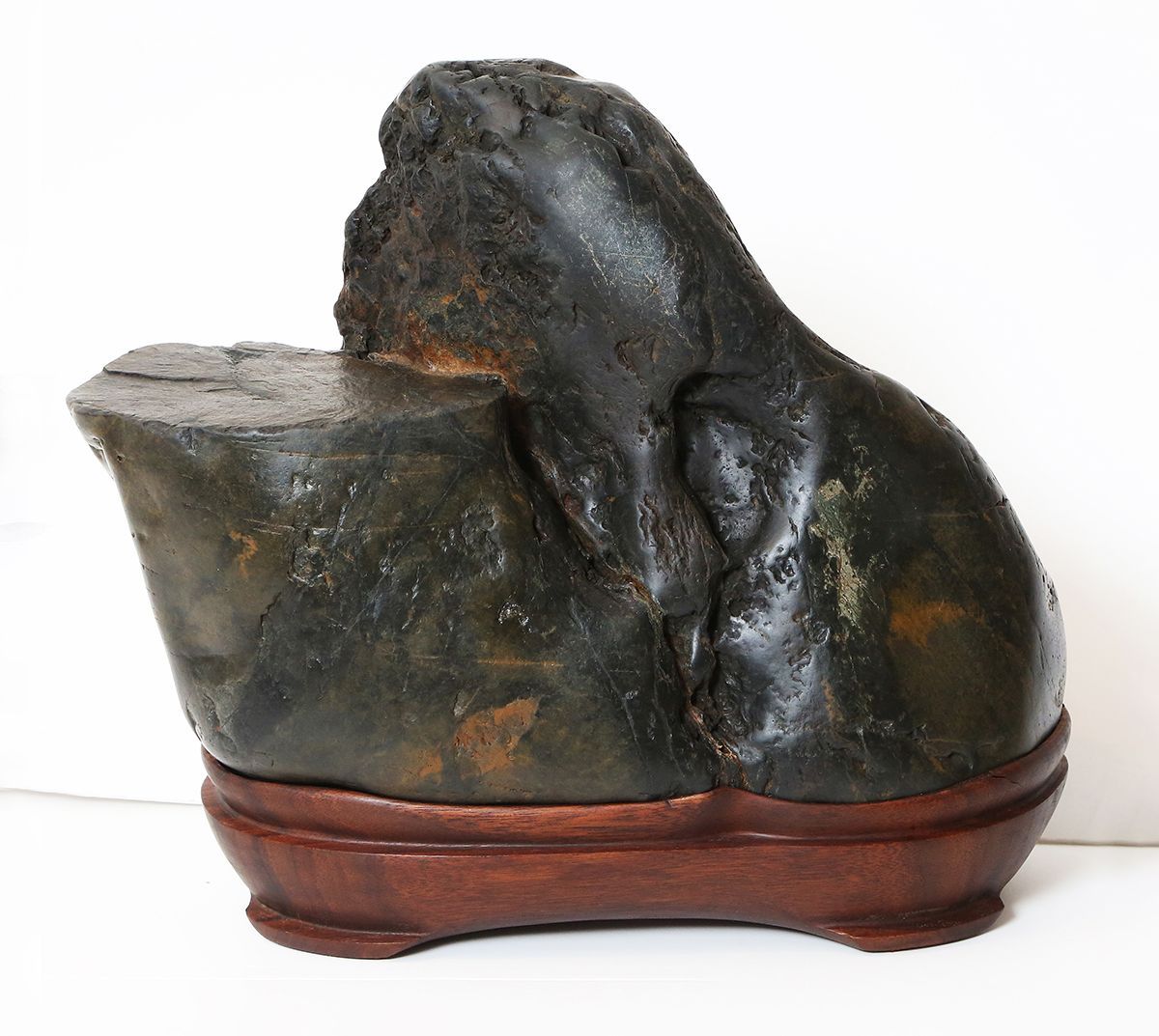
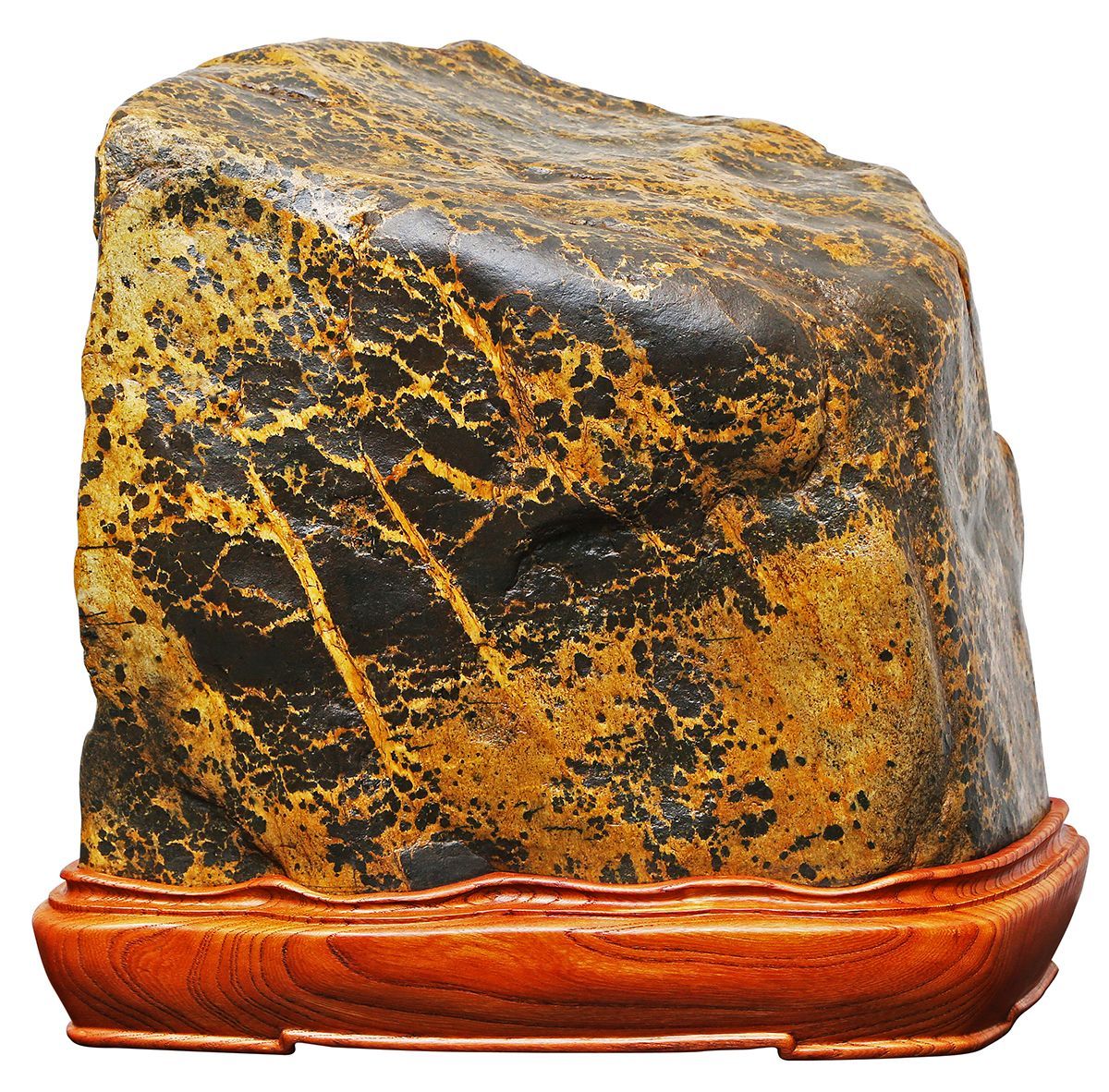
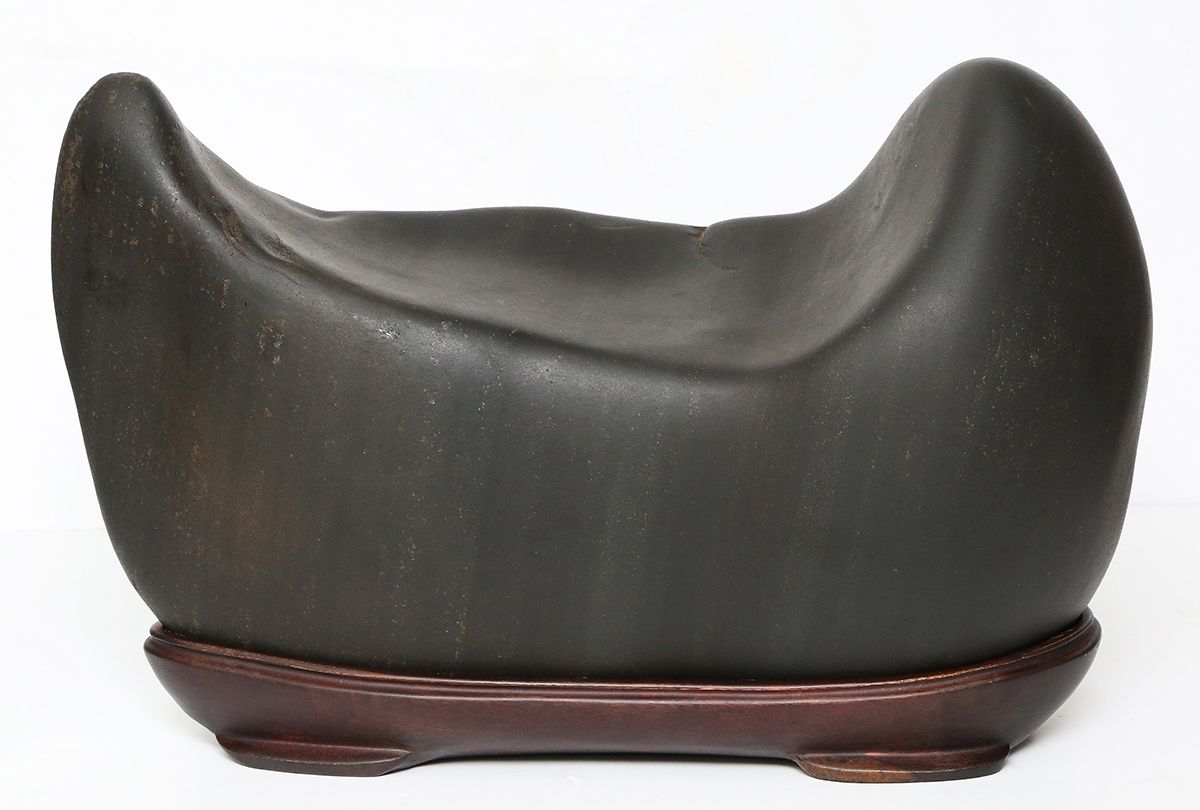
Thanks to Dr. Shim SooBo for supplying the photographs and information about his exhibition.

